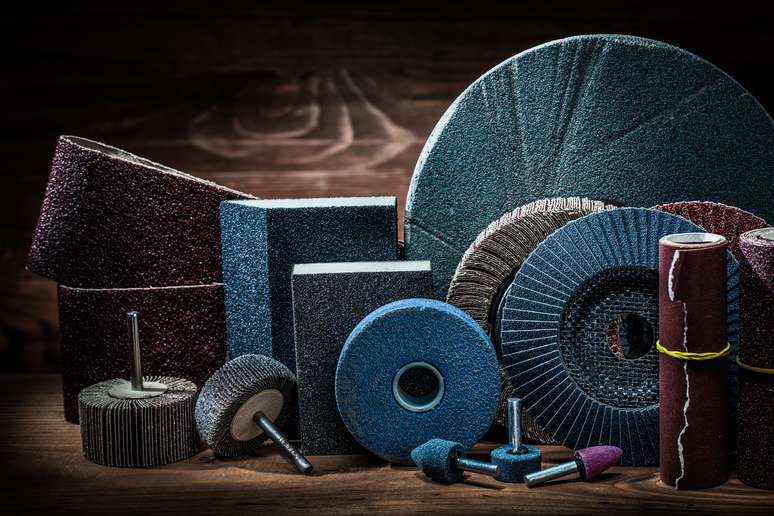What are “Coatings”
The coatings come up with the overall coverage of abrasive grain particles (such as aluminum oxide or silicon carbide) which are attached to the backing material of coated abrasive product, or rather, how much space is filled or not filled with abrasive grains. The more open space there is between grains, combined with the constant motion from sanding, can lead to a longer abrasive life. As the sandpaper sheet is used in a more open coat allows the residue to fall off, thus making it less likely to get stuck in between the grains. Not to mention, the extra space allows more room for air to flow, thereby cooling down the sanding disc during the sanding process. Ultimately, with less heat, there will be less opportunity for the wood resins and finish to soften in the first place.
There are three forms of coating options available: open, semi-open and closed – Each type has a different particle ratio and optimal application. Let’s take a look at the differences and application.
Closed Coat: The closed coating has the highest grain coverage, coming in around 90-95% coverage on coated abrasive products. This type of coating is best for sanding in a raw wood, which means sanding with coarser grains. It works well because the rough sanding produces larger pieces, and with harder woods, there is also less pitch (wood resin), so heat has less of an impact. This means there is less need for space between grains because it will not load as much in the first place. Additionally, with coarser grains, there is naturally more space between the tips of the grain, simply because the larger grains take up more space and fewer of them can fit on any particular size of surface area.
Closed coats products are also used for sealers, lacquers and in other finishing applications to obtain the most uniform scratch pattern and highest quality finish. If you’re grinding hard metals, you’ll want to stick with closed coats as well, to maximize the amount of grain cutting the hard material. The benefit here is that the closed coats have more grains, and the harder woods have less pitch, so the paper will not load as quickly anyway.
Semi-Open Coat: A semi-open coat has 70—75% coverage of grains, a nice happy medium. This level of coating is useful for hard woods, such as oak, cherry and maple, in the raw wood stage. Similar to the closed coat, with harder woods, there is less resin present in the wood, so there’s less opportunity for sticky residue.
Open Coat: With the most open space of the three coatings, coming in around 60-65% coverage of grains, this type is best for softer materials, including soft woods like pine and poplar, as well as softer metals, both for coarse sanding and polishing. With the extra space between the particles, the waste is more likely to simply fall off, taking longer to load the paper.
Conclusion is there are two main reasons to replace sanding belts, instead of sanding discs, substitude sandpaper sheets, or sanding sponges during sanding, in addition to tearing and other breakages: either the product is completely blocked or the particles become dull, rendering the abrasive useless. We always want to maximise the service life of abrasives, so it is vital to ensure that the right product is selected for the application – this means understanding the mechanisms of sanding, loading and prevention as well as the technical aspects of the product.
For example, coating, whether open, semi-open or closed, refers to the amount of particle coverage on a particular product. Knowing this can help you avoid common problems. Quick-blocking sanding disc is one of the most common and frustrating problems anyone who sands sanding disc knows. Although it is difficult to avoid completely, especially when sanding softwood and low melting point metals, the choice of an open coated product for these applications helps to minimize the effects of load because there is extra space between the particles. When sanding hard materials or rough sanding, closed or semi-open coatings can be used. Ultimately, choosing the right product for your application will help you get the best finish in the most efficient way — whether you’re thinking about coating, minimizing load, texture type, or backing.


